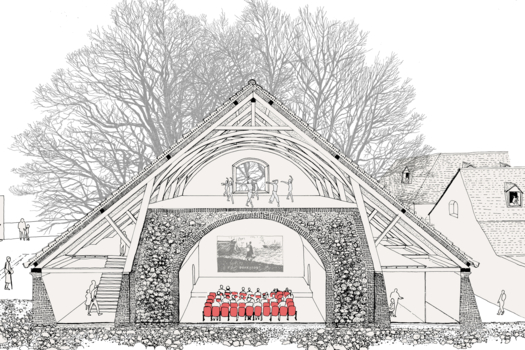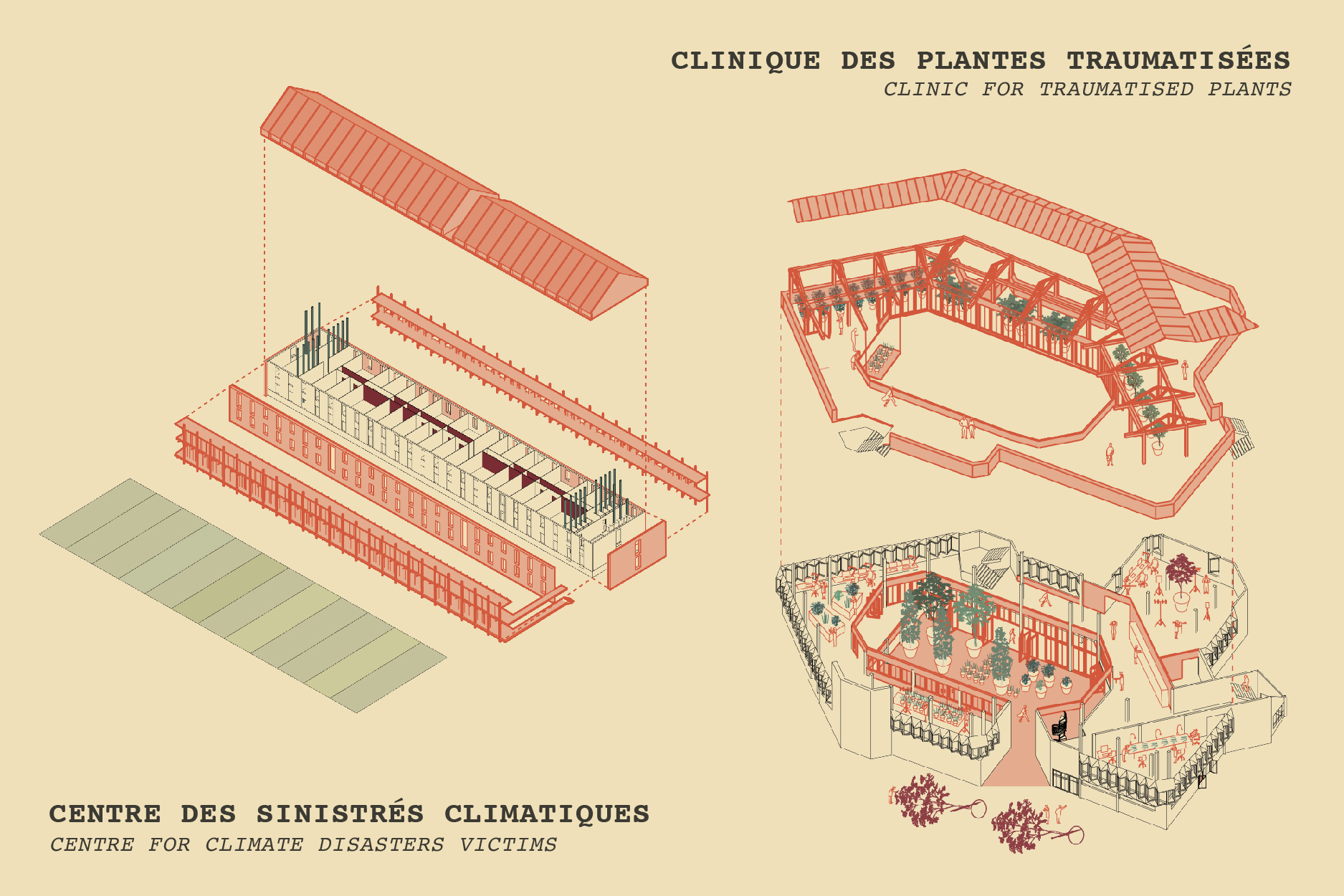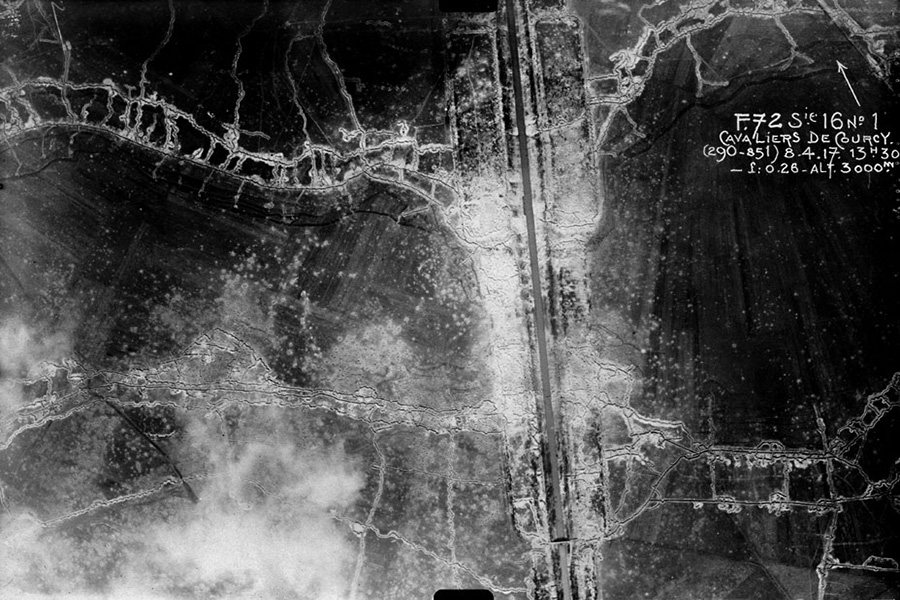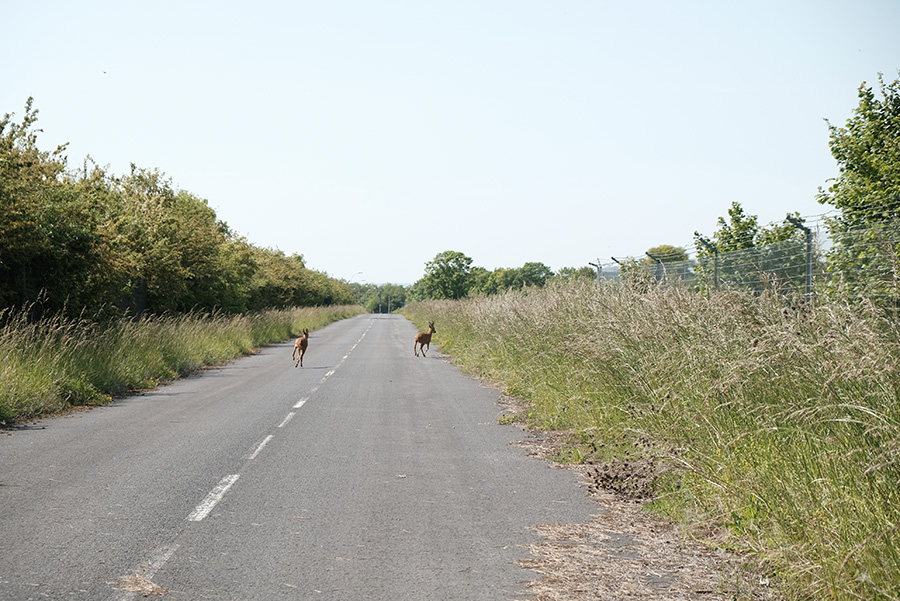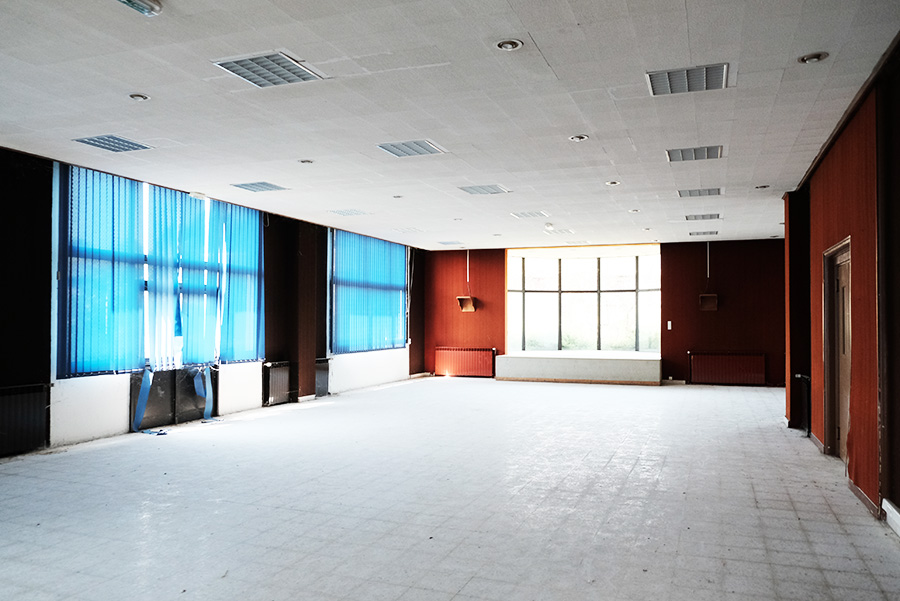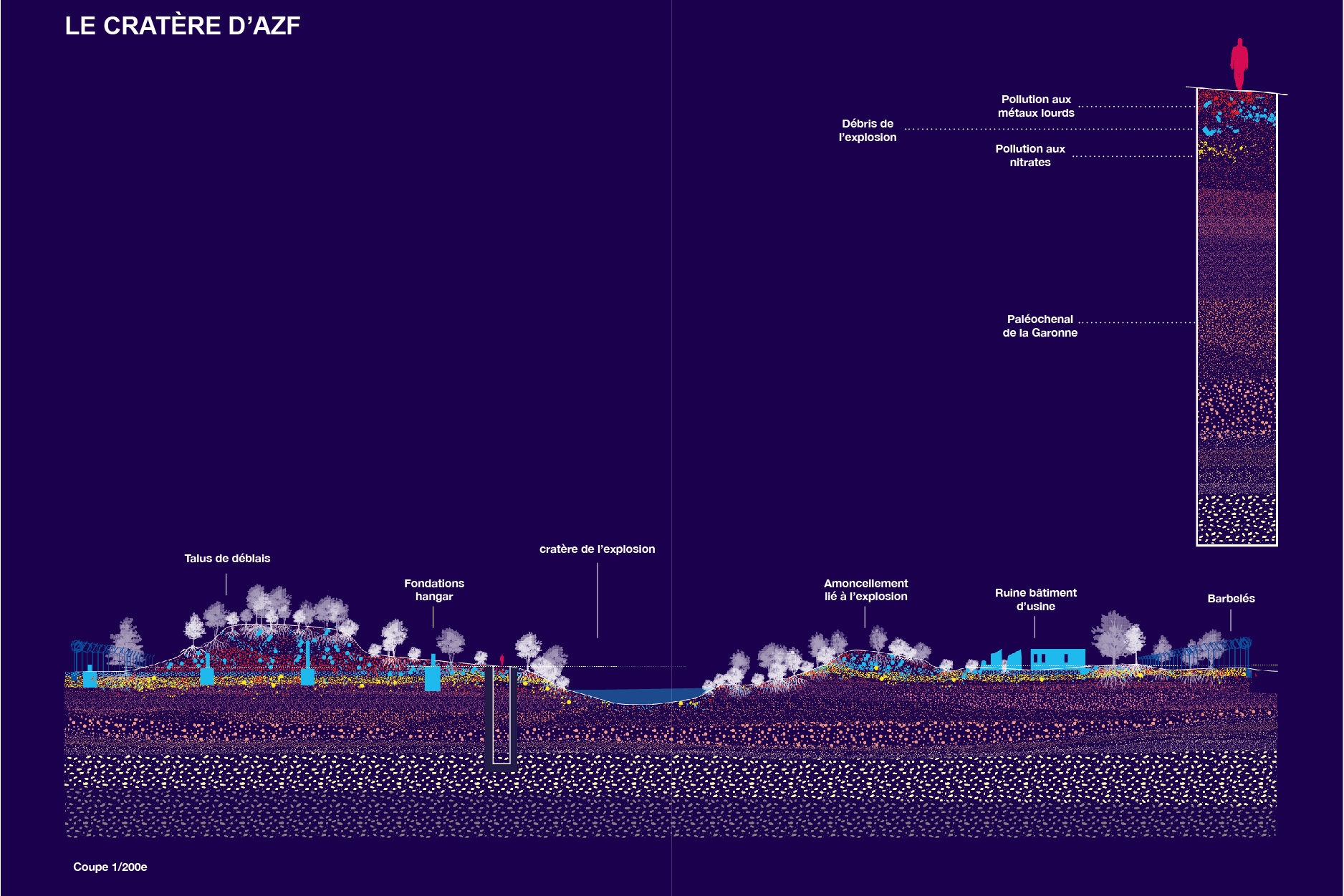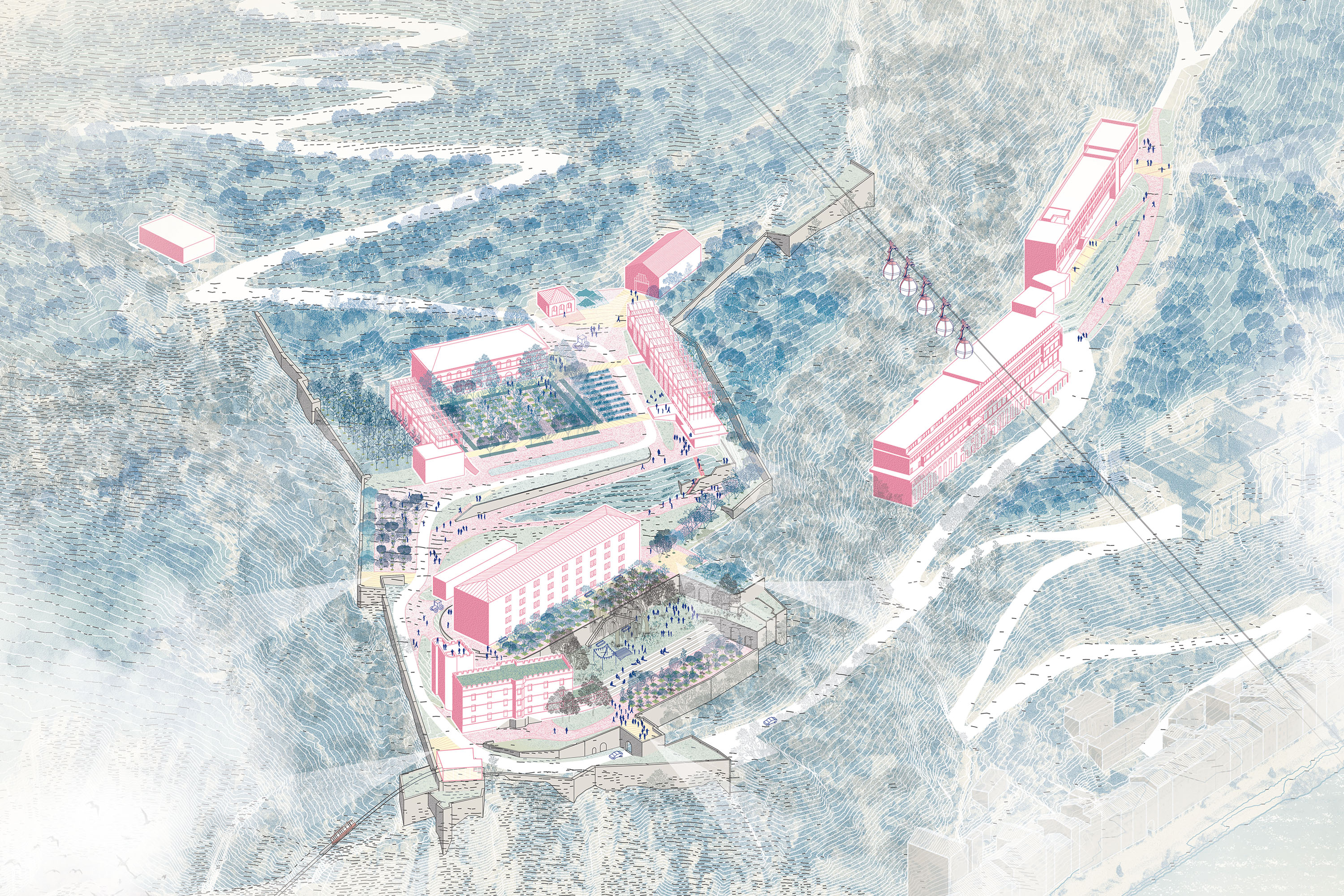OPERATION RE.MEDIATION
Courcy Grand-Reims (FR) - Winner
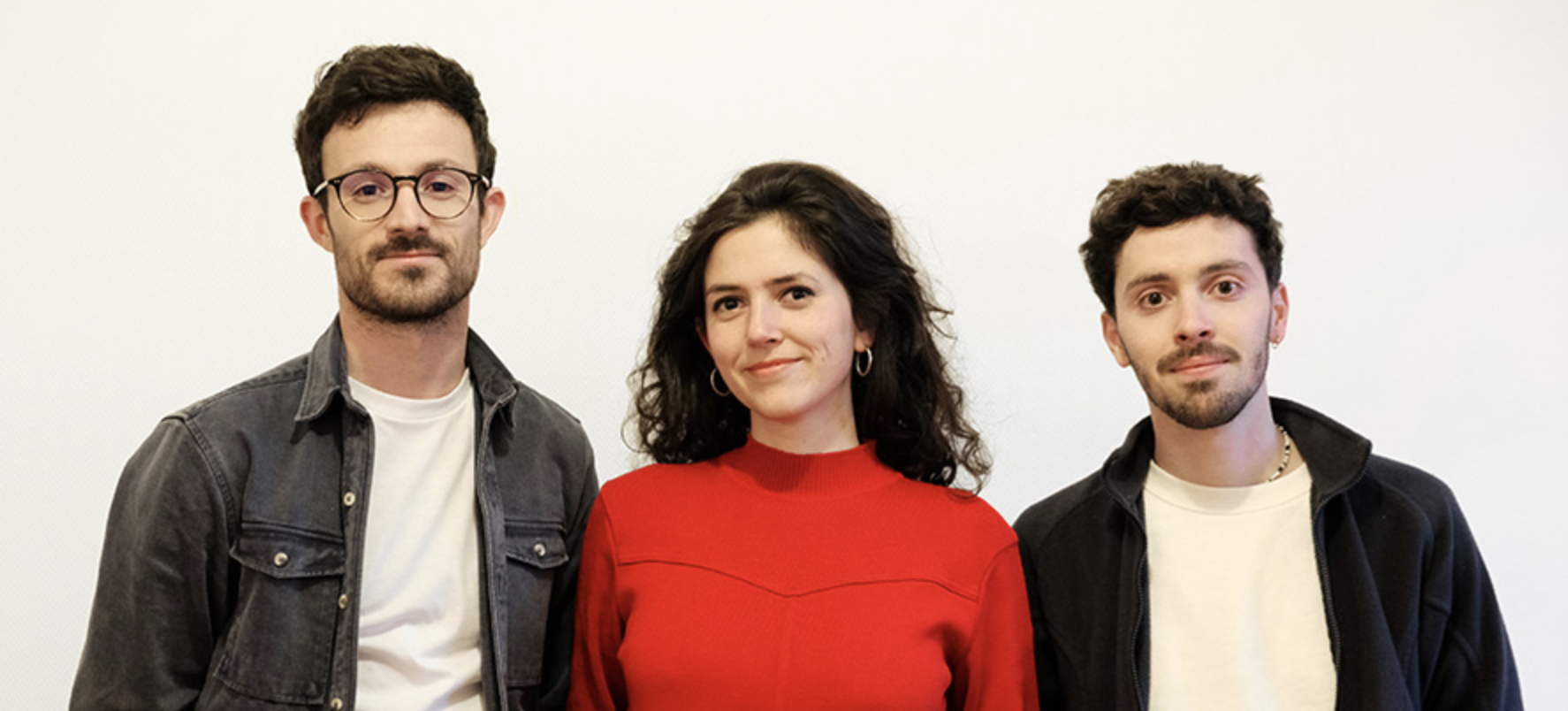
TEAM PORTRAIT
VIDEO (by the team)
INTERVIEW
Click on the images to enlarge
1. How do you define the main issue of your project in relation with the theme “Living Cities Imagining architecture taking care of the milieus”? And in which way do you think your project can contribute to an ecological and/or social evolution?
The Great War was an energy battle that cost many human and non-human lives, and led to the pollution and destruction of soils and forests. The aim of the re-mediation operation is to establish places of negotiation and diplomacy to care for the living, conserve resources, recognize the value of environments affected by energy disasters and pass them on to future generations.
2. How did the issues of your design and the questions raised by the site mutation meet?
The re.médiation operation networks 14 former air bases to structure a large-scale re.médiation front, an ecological rearmament plan able to cope with the energy confrontations of the future. These military wastelands are spaces of opportunity where new positive ways can be invented to heal the after-effects of war and disaster, reverse entropy and imagine a post-military, post-traumatic architecture and landscape.
PROJECT:



Our project draws on references and personal experience. As part of the Europan 16 competition, the conversion of a former military site was addressed by the Labo Rabot project in Grenoble. The question of soil pollution and fertility was inspired by experiments underway in the Lyon metropolitan area on fertile land. The question of disasters and post-traumatic landscapes found part of its inspiration in Karim's final-year project on the AZF disaster in Toulouse.
SITE:



Owned by SCIC Alliance Sens & Economie, BA112 is fortunate to already have a management tool reliable. In addition, Opération re.médiation meets the SCIC's objectives of sustainable development and regeneration.
REFERENCES:



Based in Paris, our team brings together the skills of an architect, urban planner and landscape architect. It was created during the Europan 16 competition, for which we were awarded the sites of Auneuil (FR) and Grenoble (FR). Our project approach is focused on the sites and their history. Alice works for a sustainable architecture and shows an interest in heritage. As a landscape architect, Maxime approaches projects through a sensitive reading of natural and man-made spaces. Karim is an urban planner and landscape architect. He is interested in writing new narratives for the territory based on local resources, actors and know-how.
6. How could this prize help you in your professional career?
The Europan competition is an opportunity for young designers to get involved and put forward alternative approaches to a city-building system that only exacerbates crises.
TEAM IDENTITY
Legal status:
Team name:
Average age of the associates: 30 years old
Has your team, together or separately, already conceived or implemented some projects and/or won any competition? if so, which ones?
Europan 16 – L’Ecole des arts de la terre, Auneuil – Winner 1st prize
Europan 16 – Laborabo, Grenoble – Winner 1st prize
TerraViva Competition Wildlife pavillons – Golden Mention
Concours d’idées l’AGUR – Bergues, la poudrière et ses remparts imaginer un lieu unique – 2nd prize
WORKS:
